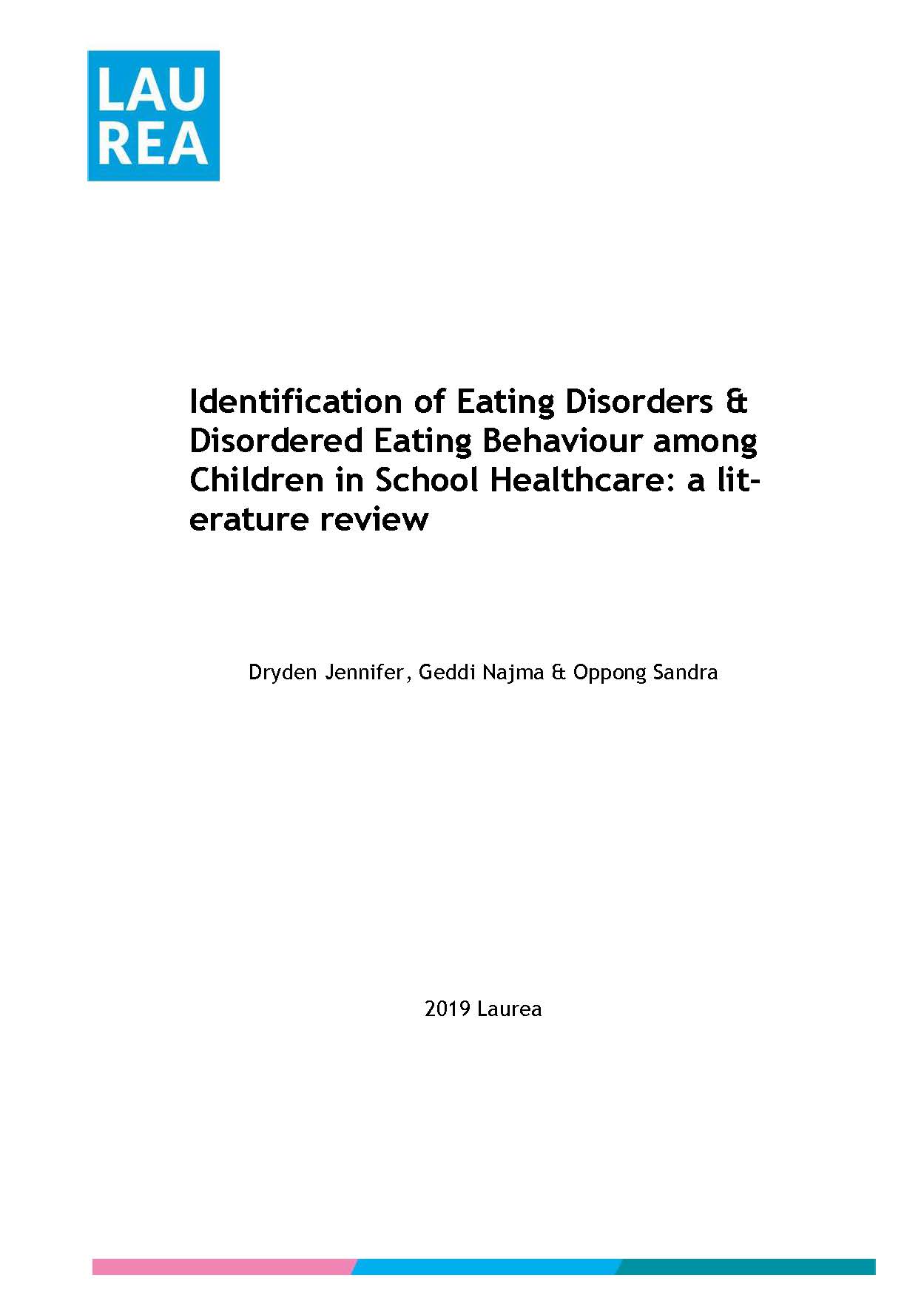Identification of eating disorders & disordered eating behaviour among children in school healthcare
Dryden, Jennifer; Geddi, Najma; Oppong, Sandra (2019)
Dryden, Jennifer
Geddi, Najma
Oppong, Sandra
2019
All rights reserved. This publication is copyrighted. You may download, display and print it for Your own personal use. Commercial use is prohibited.
Julkaisun pysyvä osoite on
https://urn.fi/URN:NBN:fi:amk-201905139517
https://urn.fi/URN:NBN:fi:amk-201905139517
Tiivistelmä
The purpose of this thesis was to describe how children’s eating disorders & disordered eating behaviors among children between the age of 7-10 are identified in school healthcare. The aim was to produce recent knowledge related to identification of eating disorders for school healthcare nurses & other school professionals.
The thesis was carried out as a literature review and the data was analyzed with the usage of inductive content analysis. Total of 5 articles were chosen for analysis, which were acquired from the following databases, Pubmed, Laurea Finna, ProQuest Central, Finna & EBSCOhost.
Research results highlighted the importance of identification & the prevention of eating disorders in school healthcare among children. Based on the authors findings, the symptoms of eating disorder were seen multifactorial. Assessment of the child needs to be done comprehensively. The school healthcare’s checkups were significant means of identification. Co-operation with teachers, parents and other school personnel was also seen important. In most cases the identification of eating disorder or disordered eating behavior started due to teachers or parents’ concerns, which led to attention of the school nurse. In some situations, nurses had raised concerns and individual observations aided the identification process, which benefited the children who didn’t meet the criteria of diagnosis.
The results from this thesis can be used to develop the school nurses’ professional skills and collaboration with other school professionals in identification. Future studies should focus in a more in-depth research on the identification of eating disorders in children below the age of 10 while also, improving the SCOFF questionnaire to suite younger children.
There should be enough resources to train school nurses to update their knowledge on children’s eating disorders to prevent poor prognosis.
The thesis was carried out as a literature review and the data was analyzed with the usage of inductive content analysis. Total of 5 articles were chosen for analysis, which were acquired from the following databases, Pubmed, Laurea Finna, ProQuest Central, Finna & EBSCOhost.
Research results highlighted the importance of identification & the prevention of eating disorders in school healthcare among children. Based on the authors findings, the symptoms of eating disorder were seen multifactorial. Assessment of the child needs to be done comprehensively. The school healthcare’s checkups were significant means of identification. Co-operation with teachers, parents and other school personnel was also seen important. In most cases the identification of eating disorder or disordered eating behavior started due to teachers or parents’ concerns, which led to attention of the school nurse. In some situations, nurses had raised concerns and individual observations aided the identification process, which benefited the children who didn’t meet the criteria of diagnosis.
The results from this thesis can be used to develop the school nurses’ professional skills and collaboration with other school professionals in identification. Future studies should focus in a more in-depth research on the identification of eating disorders in children below the age of 10 while also, improving the SCOFF questionnaire to suite younger children.
There should be enough resources to train school nurses to update their knowledge on children’s eating disorders to prevent poor prognosis.
